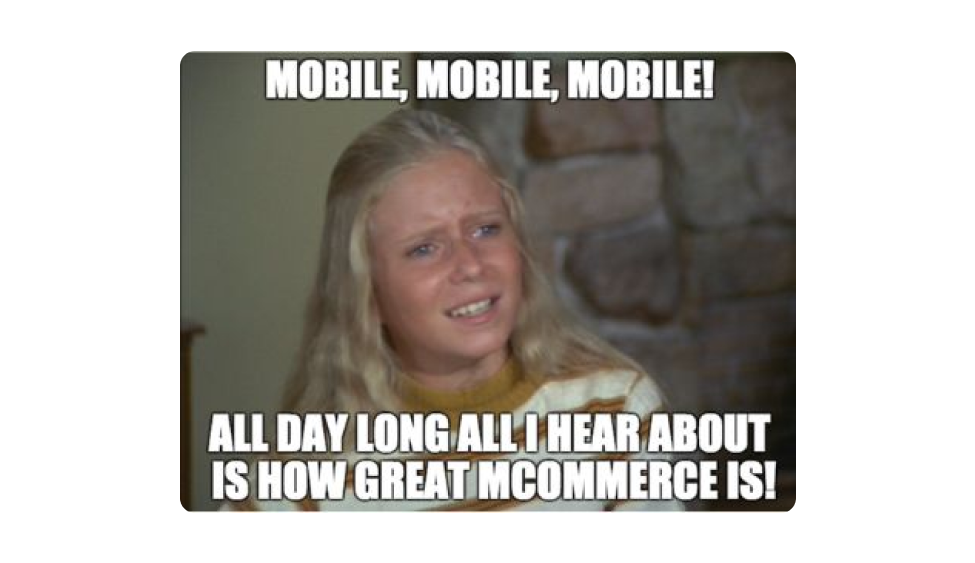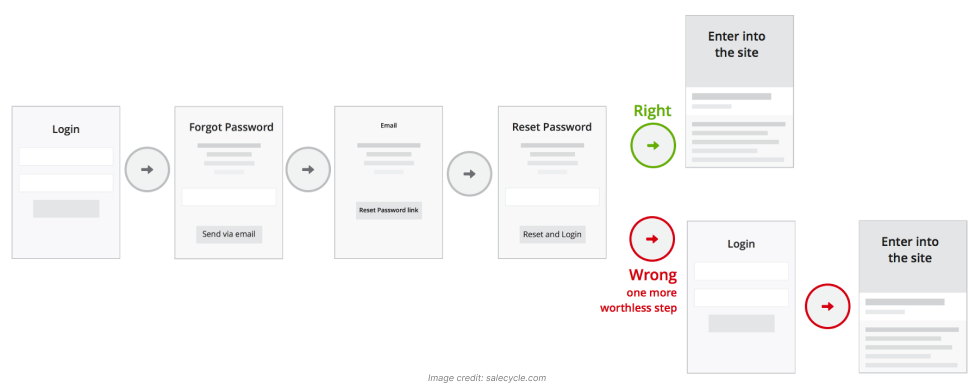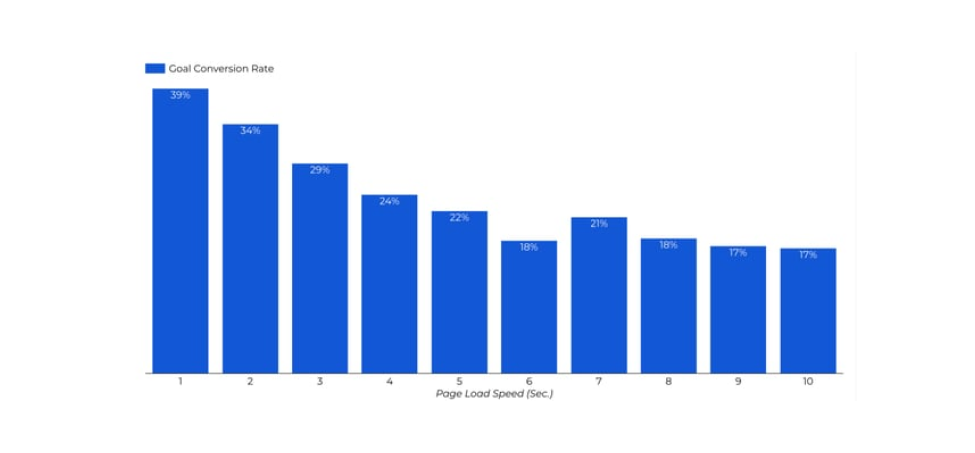E-commerce is booming, and it’s no wonder why. It has become an indispensable part of global retail with sales expected to cross the 8 trillion mark by 2026.
But my intuition tells me that it’d go way beyond that figure if online shopping becomes more convenient and user-friendly.
With the rise of mobile commerce, it’s easier than ever to make purchases from anywhere, at any time.

But as an e-commerce business, how do you create a user experience that keeps customers coming back for more? (Unless you sell we*d 😇, how can you make customers addicted to your product?)
How do you create an online experience that is both convenient and enjoyable?
In this blog, I’ll answer these questions by presenting the top eCommerce user experience best practices.
From the home page to the checkout, these tips will help you create a seamless and enjoyable experience for your customers.
But first, let’s understand what is eCommerce user experience (UX):
What is an eCommerce User Experience?
An eCommerce user experience is the overall experience a customer has when interacting with your online store.
To create the best eCommerce user experience, the first step for any brand I believe is understanding the target audience.
Comprehend their needs and wants. Find what their pain points are.
Once you understand your target audience, you can start creating tailored eCommerce UX designs that meet their needs.
For example, your eCommerce website should be easy to navigate, with clear calls to action and a logical layout. Moreover, the checkout process should be quick and simple, without any unnecessary steps or complications. Finally, your website should be mobile-friendly, as more people shop on their smartphones and tablets today.
Why User Experience(UX) matter for eCommerce store?
eCommerce user experience can influence a customer’s purchase decision and overall satisfaction.

A positive experience can lead customers to become loyal to your brand and make repeat purchases.
A poor experience can deter potential customers who abandon your brand and can invite negative reviews. (Don’t get me started on this 😴)
How to improve user experience on ecommerce website?
However, there are a few key elements that contribute to a better user experience such as,
- Easy navigation
- Search functionality
- Helpful product descriptions
- Clear CTAs
- Fast loading speeds, etc.
My suggestion is to frequently test and improve your eCommerce user experience.
Let’s glance over the 10 ways to improve the eCommerce UX of your store:
Top 10 Best Practices to Enhance (UX) User Experience in eCommerce
1. Efficient Checkout Process
We can all agree that a fast and easy checkout process is one of the crucial aspects of a good Users Experience.
If customers spend too much time or effort to complete their purchase, they’re likely to abandon the cart and never return. (Frustrating 😤! Isn’t it?)

To ensure your checkout process is as streamlined and user-friendly as possible, here I present a few tips for you to implement:
- Provide the option of one-tap sign-in with Google Extension or secure sign-in with Google, Facebook, or other accounts.
- Reduce the steps involved in the checkout process (extra steps on treadmills are healthy but in the checkout, it’s another opportunity for customers to drop out.)
- Ensure that all form fields are clearly labeled and understandable.
- Offer guest checkout as an option for those who don’t want to create an account – this can save a lot of time and frustration.
- Use auto-fill wherever possible to reduce the amount of data entry required
- Include clear progress indicators so customers always know where they are in the process and what comes next
- With the help of a prominent display and CTAs on the checkout page’s footer and header, you’ll be able to eliminate distractions.
02. Never Force Users to Sign Up
There are several reasons why you shouldn’t force your users (Consent duh!) to register before completing a purchase.
Well first, it’s an extra step that can deter potential customers from completing their purchases.
And second, it can create frustration if users don’t have an account or forgot their password.
Guest checkout is a much better option for eCommerce sites in my opinion. Why?
Because first replacing the signup process with guest checkout fixed the $300 million problem.
Further, it allows users to complete their purchases without creating an account.
This is a simpler and much quicker option that results in fewer abandoned carts.
Also, guest checkout allows you to capture customer data after the purchase is complete.
You can use social login extension. or one tap login app . plugins that enhance overall user experience of your Magento or Shopify eCommerce store.
03. Make it Adaptable for Mobile Devices
A recent study I found says that mobile is now the preferred method of communication. Mobile devices help you to generate traffic and revenue, and it’s not hard to see why.
Mobile traffic has constantly been hovering over 59% for the past year.
Further, 77% and 53% of US adults own a smartphone and tablet respectively.
Moreover, one-third of US internet users shop through mobile. Thus, I feel it’s crucial to optimize your eCommerce site for mobile devices.
That’s where responsive web designs come in. A responsive design ensures your site adjusts its layout according to the screen size it is being viewed on. (If only humans can also do that!). This means that whether someone is visiting your store on a desktop or a smartphone, they’ll always have the best experience possible.
04. Optimize Website Speed Performance
A slow website can be a real turnoff for potential customers and there is a huge possibility that they will shift to a fast one.
Let me clarify one thing here, for every second of delay in load time, the conversion rate drops by an average of 5% within the first 4 seconds.

Users may get frustrated with slow and sluggish sites and find someplace else to shop.
Thus, it’s essential to make sure your website is optimized for speed (and F-1 race) and provides good eCommerce UX to not lose out on business.
Here I list a few ways to enhance website performance:
- Use a content delivery network (CDN)
- Optimize images
- Minimize HTTP requests
- Enable image compression
- Reduce redirects
- Reduce the number of plugins
- Resolve 404 errors
05. Easy Navigation and Search
If users can’t find what they’re looking for easily, they’re likely to give up and look elsewhere.
Here are some tips for making sure your eCommerce website has easy navigation and search:
- Navigation should be intuitive and self-explanatory. Users should find their way around without difficulty.
- The search function should be prominent and easy to use. It should allow users to narrow down their search results so they can find what they’re looking for quickly.
- Product categories should be clearly defined, and easy to browse.
- There should be a variety of ways to filter products (by price, size, color, etc.) so users can find what they want without difficulty.
- Users should be able to add items to their shopping carts easily, and checkout seamlessly.
Following these tips will ensure that your eCommerce website has easy navigation and search, and is more user-friendly.
06. Simplify Product Page Layout

If I explain it in simple terms, the product page layout plays an important role to convert visitors into buyers.
Simplifying the layout of your product pages can be a challenge, but you can follow the below best practices to break the ice:
- The layout of a product page should be clean and easy to understand.
- Avoid clutter and too much information.
- Use whitespace to break up sections of content and make them easier to scan.
- Highlight key information and ensure it’s easily seen and understood.
- Use quality images to help users understand what the product looks like.
With a sleek product layout, you can enhance the search engine rankings and entice the buyer to purchase from you. (It’s like hitting a bullseye!)
Meanwhile, you can also add some unique features to your product page to make it look more appealing:
- Personalization helps you convey the functionality that meets the definite requirement of users.
- AR/VR can streamline the buying experience as it provides a new immersive experience and interaction for all visitors.
- Using a 360-degree view, customers can spin the item to inspect it just like they would in a physical store and make thoughtful decisions.
07. Showcase Your Best Products and Categories
It’s vital that your customers see the best products and categories of products you have to offer.

It not only helps them on their shopping spree but also aids in their user experience.
Here I’ve collected a few tips to showcase the best products and categories on your eCommerce website:
- Use high-quality images: High-quality photos not only look better but they give users a better idea about the product. Just as your girlfriend/wife doesn’t like poor-quality photos, your customers don’t like it too.
- Use descriptive text: In addition to using high-quality images, it is also essential to use descriptive text. This will help users understand what the product is and how it works. Be sure to avoid using jargon or technical terms that might not be familiar to an average user.
- Organize products into categories: The best way to help users find what they are looking for is to organize products into categories. This makes it easy for users to browse through your products and find what they want.
- Add filters and search functions: In addition to organizing products into categories, you should also provide users with filters and search functions. This will allow users to narrow down their search results and find exactly what they need.
08. Entice with Trust Badges and Social Proof
The internet is a vast place with a lot of different types of businesses and it can be hard to know who to trust.
This is where trust badges come in.
A trust badge is a symbol to show that a website or company is trustworthy.

They can come in many different forms, but they all serve the same purpose: to give customers peace of mind while shopping online.
There are many kinds of trust badges we’ll take a look at and see what benefits they can offer for your business.
Types of Trust Badges and examples:
In my research, I found a few types of trust badges you can use and add to your website. Let’s have a look:
- Free Shipping and Free Returns: By offering such things will help you to gain trust and acquire more and more customers.
- Guaranteed Safe and Secure checkout Page: The badge depicts that your checkout process is easy and information related to banking details will be safe and secure.
- Money-Back Guarantee: It’s a free-to-use trust badge you can download or create on your own and place it near the “Add to Cart” button and the “Checkout” button.
- Accepted Payment Trust Badges: Displaying a recognizable payment processor brand will help customers feel more confident and trust you.
- Social Media: Display positive feedback from loyal clients or brand evangelists in the form of tweets, Facebook posts, Instagram comments, etc. Although it works best for B2C goods and services, this kind of social proof can also be useful for B2B.
On the conference landing page, Social Media Examiner employs social proof to demonstrate the quantity of year-round conversation regarding the conference.
09. Attach Feedback Form for Better Engagement
An effective way I think to understand your customers’ problems is to include a feedback form on your website.
It’ll allow you to collect information from your customers about their experience with your site and what areas need improvement.
It’s the most simple way to get actionable insights from your customers that can help you improve the eCommerce user experience. (If only getting feedback was that simple!)
Make sure to place the form prominently on your site and make it easy for customers to find and fill out.
Let’s see the different types of feedback forms that you could include in your store to get better results:
- Surveys and Feedback Popups: Popups are great if you want to obtain input from as many people as possible. They come in a variety of ways but to be successful, pay close attention to time and targeting.
- Inline/Embedded forms: If you like something less confrontational, try using an inline feedback form. Inline means that it’s a part of your real content, similar to a contact form.
- Feedback Form with Live Chat Embedded: With the help of live chat you can easily interact with customers. The key benefit of it is you could offer 24/7 support along with building a rapport with customers.
10. AI-driven Product Recommendation
AI recommendations help in ensuring customers explore the desired set of products immediately. It’s essentially a filtering system to forecast and display the things that a user would like to buy.It may not be completely accurate I guess, but if it displays what customers want, it is doing a perfect job.
The first step to providing a personalized user experience is understanding what your customers want.
This means researching to learn about their needs, desires, and motivations.
Once you know what they want, you can design your eCommerce website to offer customized experiences that meet their needs.
Take a look at your past research. What have you learned about your target audience?
Use this information to create a list of product suggestions that will meet their needs.
Then, start creating content that showcases these products in a way that will appeal to your target audience.
Conclusion
The success of your online business hinges on delivering the best eCommerce user experience possible. By following these eCommerce user experience best practices, you can create seamless and enjoyable experiences. This will compel customers to keep them coming back for more of your stuff 😜.
Prioritizing customer experience in eCommerce will ensure that your website is easy to navigate, visually appealing, optimized for conversion, and generate exceptional ROI
But to generate such ROI, you first need to make an investment. (Ain’t that ironic! To earn money, you first need money.)
So, invest in your website’s user experience and take it to the next level with the help of Coduzion’s digital excellence team.
Contact us to not only make us work for you but also make your money (Investment) work for you.

Chirag Bhavsar Founder & CEO, Coduzion
Chirag Bhavsar is Founder and CEO at Coduzion. Gusty, Passionate, and a Sports freak. Loves to spend time reading financial books and playing outdoor games as soon as He is away from his desk. He always loves to take on new challenges and get good at them.











